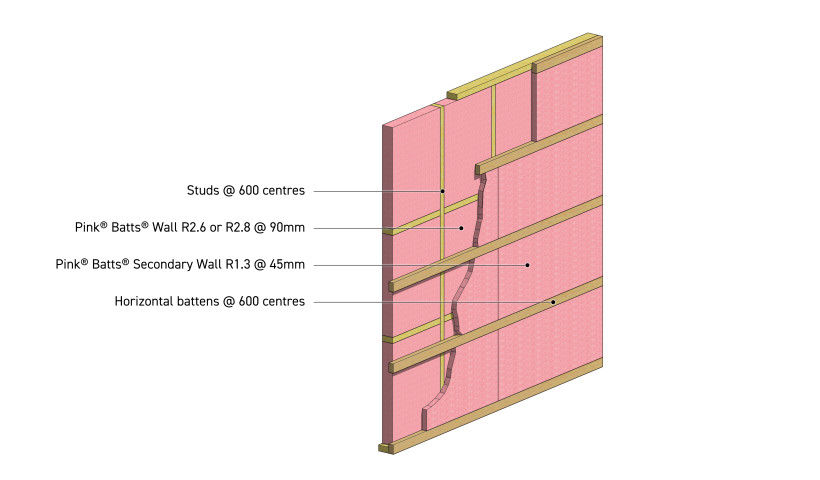
The recent changes to Building Code clause H1 bring the biggest energy efficiency improvements in over a decade. To help address these issues, MBIE introduced the new 5th edition of H1/AS1 and H1/VM1 for housing and H1/AS2 or H1/VM2 for buildings greater than 300 m², from 01 May 2023.
The changes focus on significant increases to insulation requirements and the introduction of six new climate zones to reflect the specific weather experienced in different parts of the country will help New Zealand homes and buildings to become warmer, drier, and more comfortable.
Although these changes introduce increases to insulation requirements, there are minimal changes to residential walls. With the new 5th edition H1 regulations, you will only need to consider the framing percentage in the wall as the sum of the top and bottom plates; studs and nogs or dwangs; there is no allowance for additional studs, jack studs or lintels.
However, a BRANZ Beacon Pathway report highlighted that the average amount of framing in new build timber frame wall is actually closer to 34%, and up to 55%. This is well above the 12% to 18% on which the current code is based. Therefore, with the higher than assumed thermal bridging and a code that requires construction R-values to be used, we expect the market to move quickly, using R2.8 Pink Batts wall insulation in 90mm framed walls.
For wall framing percentages above 25%, 140mm framing should be considered, where Comfortech offer an R-value as high as R4.3.
These new changes provide homeowners with a well-insulated home with minimal thermal bridging, improving health, energy efficiency, and financial benefits.
To learn more about the H1 Changes, visit H1done.co.nz













 New Products
New Products














 Popular Products from Comfortech Building Performance Solutions
Popular Products from Comfortech Building Performance Solutions


 Posts by Comfortech Technical
Posts by Comfortech Technical Most Popular
Most Popular



